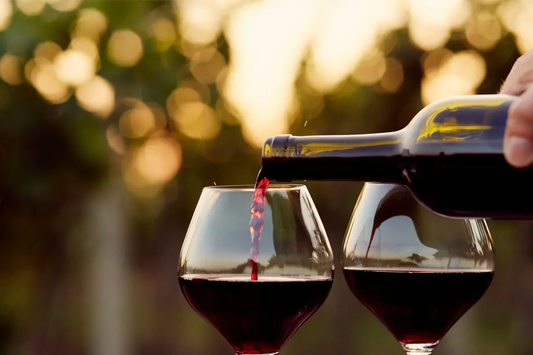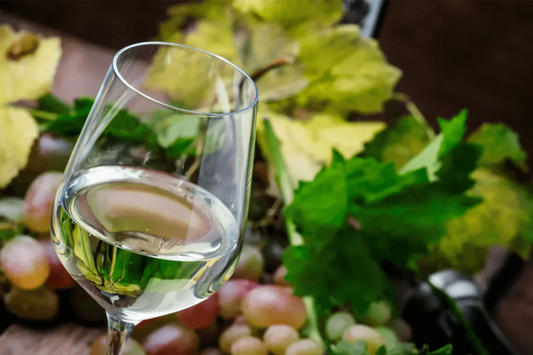
How to Store Wine at Home: Best Wine Storage Tips for Freshness & Flavour
Seven Quick Tips to Store Wine at Home:
Storing wine properly at home keeps bottles fresh, flavorful, and ready to enjoy. Here are seven quick wine storage tips every wine lover should know:
- Keep wine between 10-15°C and avoid temperature changes.
- Store in a dark place to protect from UV rays.
- Lay corked bottles on their side to keep corks moist.
- Avoid vibration from appliances or traffic.
- Maintain 50-70% humidity to protect corks and labels.
- Keep bottles away from strong odours that can seep into the wine.
- Use wine fridges or cabinets for long-term storage.
Why Proper Wine Storage Matters
Proper wine storage is essential because wine is sensitive to heat, light, humidity, and vibration. When stored correctly, wine maintains its flavour and aroma, but poor storage can cause spoilage, a flat taste, or even push corks out. Knowing how to store wine at home ensures that each bottle tastes as it should! The following paragraphs will share expert tips you should know to keep your wine fresh and full of flavour.
Best Way to Store Wine at Home: 7 Expert Tips
1. Keep It Cool and Consistent
The ideal wine storage temperature is 10-15°C (50-59°F). More important than the exact number is keeping it consistent. Avoid kitchens, radiators, or windows where the temperature fluctuates, as this can spoil wine and push corks out.
2. Store Wine Away from Sunlight & UV Rays
Light exposure is one of the biggest threats to proper wine storage. Light, particularly UV rays, can spoil wine by setting off chemical reactions that diminish its flavour and aroma. Sunlight is especially damaging, but even harsh artificial lights can cause issues over time. It's best to keep your wine in a dark cupboard, closet, or a wine fridge with UV-resistant glass. Doing so not only protects your wine but also helps create a stable environment for it.
3. Store Bottles on Their Side
To store wine with corks properly, always keep bottles on their side. Storing wine horizontally keeps the cork moist, preventing it from drying, shrinking, and allowing air to enter that could oxidise the wine. This simple wine storage method also saves space and keeps collections organised, making it ideal for both beginners and serious collectors.
4. Minimise Vibration for Proper Wine Storage
For proper wine storage, bottles should rest in a stable, vibration-free environment. Even minor movements from appliances, traffic, or speakers can disturb sediment and affect the ageing process. The best way to store wine long-term is in a quiet spot where bottles remain undisturbed for months or years.
5. The Right Humidity for Wine Storage
The ideal humidity for wine storage is 50-70%. This range prevents corks from shrinking in dry air while avoiding mould or mildew in overly damp spaces. To maintain proper wine storage conditions, use a hygrometer or choose a naturally cool, dark cupboard that stays within this safe humidity range.
6. Keep Wine Away from Strong Odours
Proper wine storage means protecting bottles from strong odours. Wine can absorb smells like cleaning products, spices, or rubbish through the cork, which alters its flavour. Always store wine away from kitchens or chemicals, and consider airtight containers or wine cabinets with odour control for extra protection.
7. Tools & Wine Storage Solutions (Fridges, Racks, Cellars)
When it comes to long-term storage or managing larger collections, investing in tools such as a wine fridge, a temperature-controlled cabinet, or even a bespoke wine cellar can enhance your experience. These options allow for precise control over temperature and humidity and typically offer protection from UV light and vibration. Even a simple wine rack in a cool, dark place is an excellent step up from simply storing them in the kitchen.
How to Store Opened Wine at Home?
When you open a bottle of wine, it starts to oxidise, which can change its flavour and freshness. To help slow this process, it’s usually a good idea to reseal the bottle and pop it in the fridge, even for red wines. That said, different types of wine have varying shelf lives and storage requirements. For a deeper look at how long wine lasts after opening, check out our guide: How Long Does Wine Last After Opening?
If you're specifically storing red wine, we also have helpful tips here: How to Store Opened Red Wine and Keep It Fresh for Days.
How to Store Red Wine at Home?
Red wine should be stored at 10-16°C, on its side if corked, and kept away from heat and sunlight. Use a wine fridge or dark cupboard for short- to mid-term storage, and once opened, refrigerate upright and consume within 3-5 days. Stable storage conditions preserve red wine’s flavour, body, and aroma, whether you’re saving it for days or years.
Quick tips for storing red wine:
- Store between 10 °C and 16°C, depending on the style (lighter reds are cooler, full-bodied wines are warmer).
- Keep corked bottles on their side to maintain cork moisture.
- Avoid sunlight and heat sources like stoves and radiators.
- Use a wine fridge or dark cupboard for short- to mid-term storage.
- Once opened, store upright in the fridge and consume within 3 - 5 days.
How to Store White Wine at Home?
White wine should be stored at 8-12°C, cooler than reds, in a dark and stable environment. Bottles with corks ought to be kept horizontally, whereas opened white wine should be refrigerated upright and consumed within 3-5 days. For premium bottles like Chardonnay, temperature-controlled storage helps maintain complexity.
Quick tips for storing white wine:
- Keep bottles at 8-12°C, cooler than reds.
- Store horizontally if the bottle has a cork.
- Use a wine fridge or a cool, dark shelf to avoid light and heat exposure.
- Once opened, refrigerate upright and enjoy within 3-5 days.
- For premium whites, consider temperature-controlled storage to preserve complexity.
Why Canned Wine Might Be the Smarter Choice
If you find storing bottled wine at home a bit of a hassle, with temperature control, cork issues, and seeing that perfect dark corner, there’s a much simpler option: canned wine. It doesn’t need horizontal storage, avoids cork problems, and cools down faster. Plus, it’s lightweight, easy to carry, and the ideal size for any occasion. Whether you're short on space or just want a hassle-free wine experience, canned wine provides both quality and convenience in a stylish package.
Ready to skip the storage stress? Explore our premium canned wine collection and taste the difference today!
Conclusion
Storing wine properly at home can enhance its flavour, quality, and overall value. Whether you've got a cherished bottle or a small collection, keeping a few straightforward storage tips in mind will help ensure that every sip tastes just as it should. Start using these tips today and relish your wine at its finest.
FAQ
1. What is the best temperature to store wine at home?
The ideal temperature for storing wine is between 10°C and 15°C. However, what matters most is maintaining a consistent temperature rather than fixating on the exact number.
2. Do I need a wine fridge to store wine properly?
Not always! A cool, dark, and quiet cupboard is perfect for short to medium-term storage. If you're planning to store bottles for the long haul, a wine fridge is a great investment.
3. Should wine be stored upright or on its side?
When it comes to storing corked bottles, it's best to lay them on their side. This helps keep the cork nice and moist. On the other hand, screw-cap bottles can be stored either upright or on their side without any issues.
4. How do I store wine without a cellar?
Choose a cool, dark spot to store your wine, like a cupboard, a closet, or even that little area under the stairs. It’s important that the space stays away from humidity and dryness. Adding some wine racks can also come in handy!
5. Can I keep an open wine at room temperature?
If you've opened a bottle of wine, it's a good idea to re-cork it and pop it in the fridge, even with reds. Doing this helps to slow down oxidation and keeps the flavour intact.



